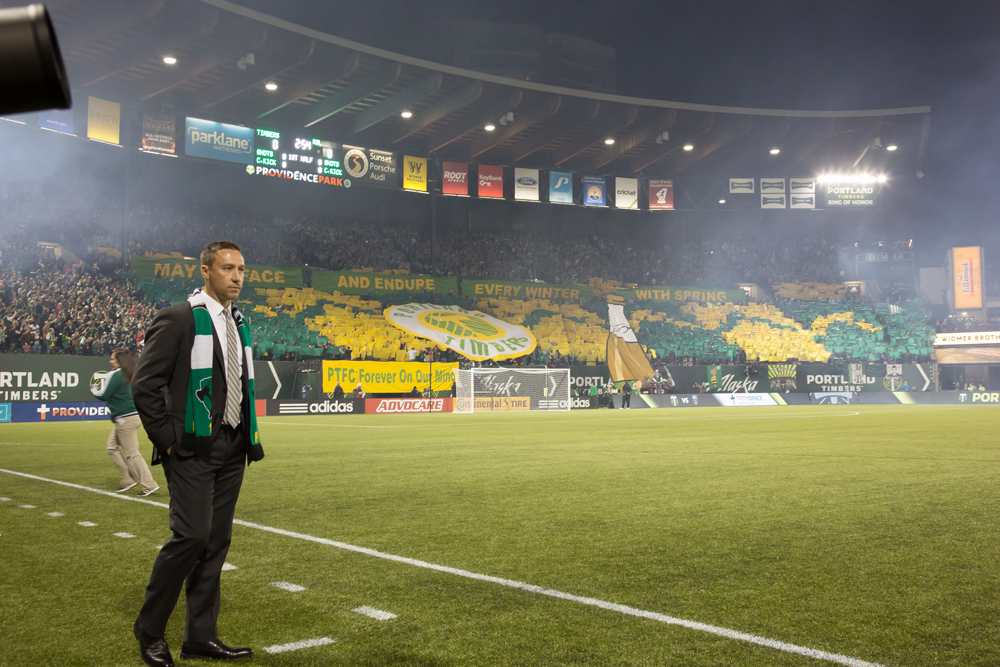In our ongoing commitment to covering the multifaceted arenas in which PSU competes, the Vanguard will be covering The PSU League of Legends Club spring tournament. Eight teams will battle it out in virtual e-sports arena over the course of the term.
Following will be a preview of the tournament to come and a breakdown of the game for those who do not know it.
Gameplay
League of Legends (LoL) is a free-to-play multiplayer online battle arena in which players compete as a team of virtual champions to destroy their opponent’s base. There are four maps and game modes, but all competitive play takes place on the 5 vs. 5 classic mode and map.
In the classic mode there are three lanes in which players battle for the gold from killing computer minions, which steadily march forward attacking whatever is closest to them, and enemy players. Between the lanes is a jungle with larger computer minions which provide more gold and character upgrades (known as buffs to the LoL crowd). There is also a river that runs between the lanes vertically holding the two bosses, which must generally be fought by more than one player and offer larger rewards.
The object is to progress down the lanes, destroying the enemy team’s three turret defenses, eventually infiltrating their base to destroy an inhibitor (buffing your minions), and then their final two turrets and nexus crystal. The destruction of the other team’s nexus means victory. In essence—infiltrate the enemy base and destroy all their stuff.
Every game you begin at level 1 and gain experience to level 18. You are able to customize your character with armor and weapons throughout the game, which is called a build. Starting from scratch every game means that no game is the same, and teams who gain a quick lead in experience or gold have the potential to snowball out of control, quickly dominating the game.
The general lane strategy is to have a solo middle and top laner, two on bottom and one floating between lanes in the jungle.
In the bottom lane there is usually a support character, either a tank with a lot of health and the ability to draw the enemy to them, or a someone who can heal or shield, and disrupt the enemy in some way. They support an ADC (attack damage carry) who fires a ranged weapon and deals mostly basic physical damage.
The player in the jungle spends their time killing monsters outside of the lanes to leave more minion exp. points to those in the lane. They have the ability to surprise the enemy lanes with a quick “gank,” and also ward the jungle with totems that reveal small sections of the map, thus giving the team an idea of enemy movements. Map awareness is a critical part of the game.
Theoretically, there is no correct way to play LoL, as every game is a combination of skill, strategy and the outcome of small skirmishes. One could have a team of five ADC going mid and still win, but generally a more diverse group makeup is more effective. With changes to the game and new characters offered consistently, strategies continually evolve.
Champions
There are 124 different champions to choose from in LoL, but they must be purchased with real money or points built up by playing the game. There are 10 free characters available to test out each week, but you must own the character to play it competitively. Each character may fit your play style, some do more damage than others, some have better escapes, some you cannot escape from, while others do little damage but do much to support their team.
Combining characters that have synergy is also a powerful tool for teams. Linking stun spells, or combining “area of effect” spells that do damage to multiple enemies in an area are examples. Players can unleash more damage by working together; for another example, one launches the enemy into the air so the other can use their ultimate airborne-only attack.
Tournaments
Tournaments begin with each team banning three characters that neither team may use. Once a champion is picked, the other may not pick it. There is an alternating succession of picking, so choosing your characters is often based on what the other team has picked, either as a counter or offensively. If you know who the other team will send to the top lane, then you can choose a character that can win against that champion. Flex picks, however, are characters which can take on a variety of roles. When flex picks are chosen, the other team is not sure who to pick to counter their role.
Teamwork is the number-one necessity in this game, and especially in tournaments. Teams need to be able to communicate, either in person, over microphone, or via pings on the map and in-game text.
Team fights are often a defining factor of the game. Teams that can win 5 vs. 5 fights or set up outnumbered fights have a much better chance of winning the overall game. When a champion dies the other team gains a gold advantage, and there is a death timer they must wait out before entering the game again, leaving their team at a disadvantage.
Split pushing is a useful tool in dividing the enemy team. By sending one player top or bottom to push minions to the enemy turrets, the enemy must break up their offense to defend against that one player. It creates a fair bit of chaos.
Once the enemy team’s base has been exposed, a player may try to backdoor the base. This happens late game, and it is the sneaking in and quick ninja-like destruction of turrets or even the nexus crystal to end the game. Some teams, both because of play style and characters chosen, will be stronger early, mid or late game. Length of game can be a determining factor, though they usually last between twenty minutes and one hour.
There are a number of other basic strategies that teams will use to progress forward offensively or hold their base defensively. Having players who are able to call shots and move a strategy forward is a necessity.
Which strategies teams will use, and what split-second decisions they will make, will be covered in depth soon. Keep an eye out for upcoming game coverage over the spring term, and watch the games live at twitch.tv/portlandstatelol/profile.
For more information on LoL or the games contact PSU League of Legends Club at: facebook.com/groups/VikingsLoL/






